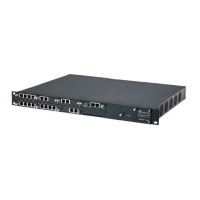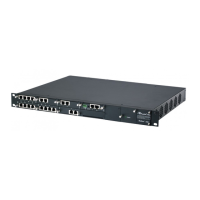User's Manual 696 Document #: LTRT-27055
Mediant 1000B Gateway & E-SBC
According to result of an ENUM query.
Hunt Group - used for call survivability of call centers (see ''Configuring Call
Survivability for Call Centers'' on page
761).
According to result of LDAP query (for more information on LDAP-based routing, see
''Routing Based on LDAP Active Directory Queries'' on page
239).
Third-party routing server, which determines the destination (next hop) of the call (IP
Group). The IP Group represents the next device in the routing path to the final
destination. For more information, see ''Centralized Third-Party Routing Server'' on
page
279.
Tel destination (i.e., Gateway call). The rule redirects the call to the IP-to-Tel Routing
table where the device searches for a matching IP-to-Tel routing rule. This feature can
also be done for alternative routing. If an IP-to-IP routing rule fails and it is configured
with a "Gateway" routing rule as an alternative route, the device uses the IP-to-Tel
Routing table to send the call to the Tel. The device identifies (internally) calls re-
directed for alternative Gateway routing, by appending a user-defined string to the
prefix destination Request-URI user part (by default, "acgateway-<prefix destination>",
for example, acgateway-200). The device removes this prefix before sending it to the
Tel side. To configure this prefix string, use the GWDirectRoutePrefix ini file
parameter.
Back to the sender of the incoming message, where the reply can be a SIP response
code or a 3xx redirect response (with an optional Contact field to where the sender
must re-send the message).
The following figure summarizes the destination types:
To configure and apply an IP-to-IP Routing rule, the rule must be associated with a Routing
Policy. The Routing Policy associates the routing rule with an SRD(s). Therefore, the

